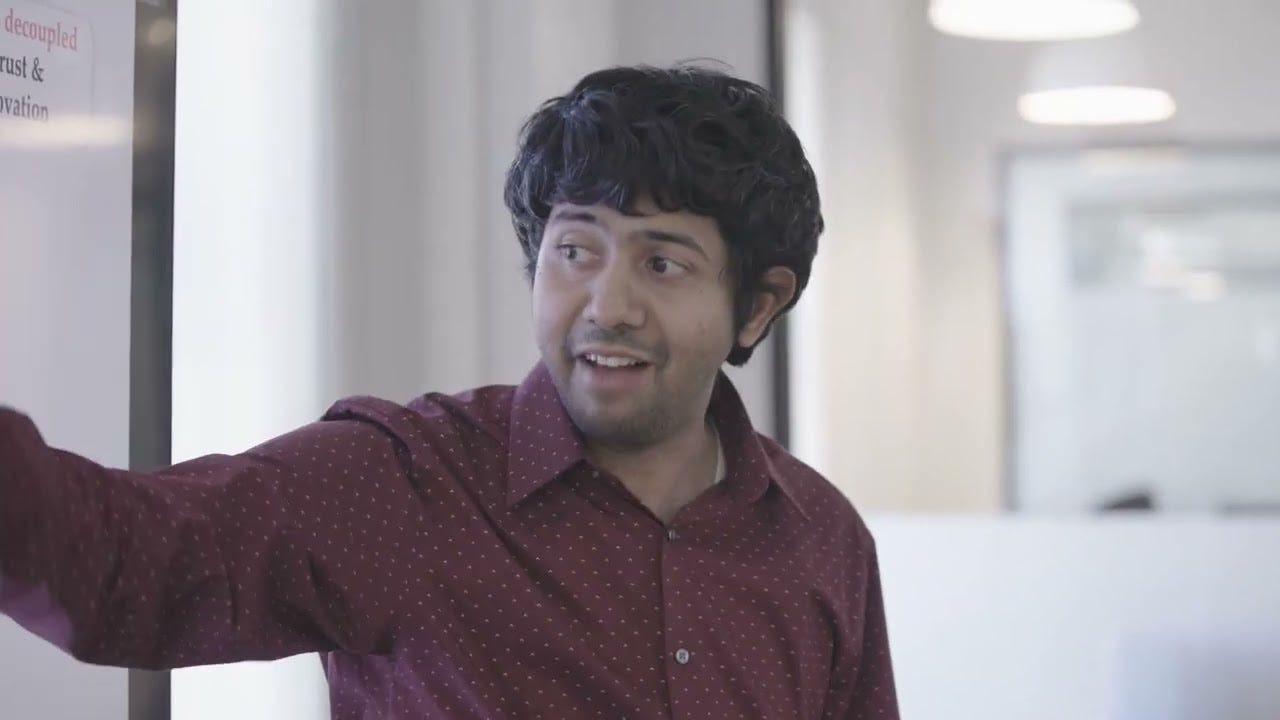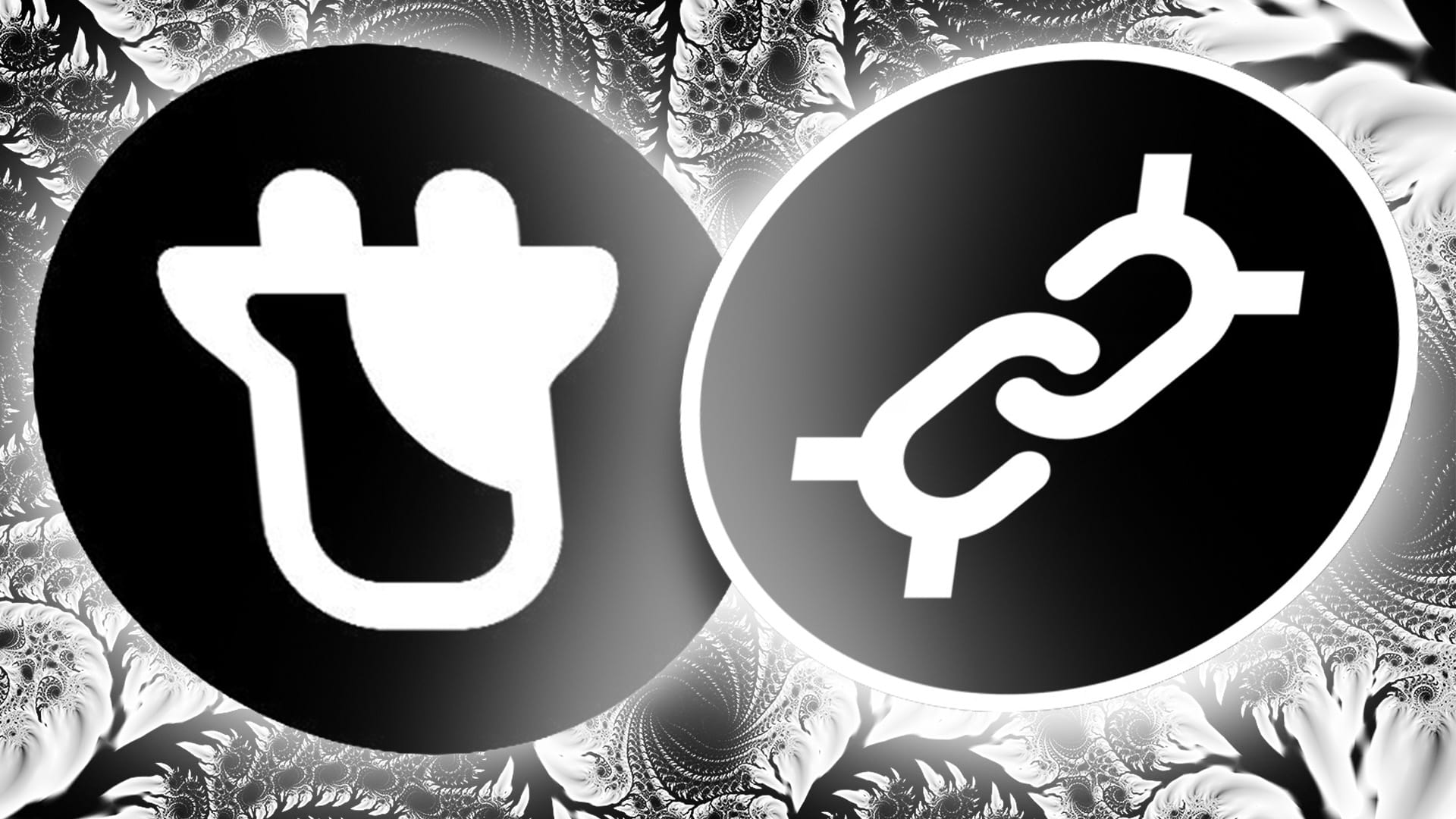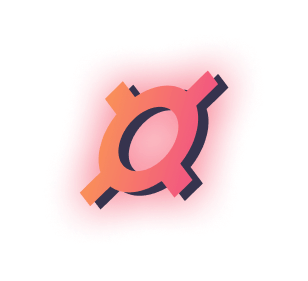Watch the full episode at the end of the article
Authors Note: This week’s episode resonated heavily for me, as someone who bought their first Bitcoin in 2011 to use in decentralized market places and has been building in and on the Ethereum ecosystem since 2017 full time. I’ve never really been able to explain why when I saw Bitcoin for the first time, it was not as alluring as a product to me as when I discovered Ethereum.
Bitcoin is just money, a shiny digital rock used solely to pass perceived value back and forth between two addresses. Bitcoiners maximize trust and transactional capability above all. Network functions are limited to ensure anyone can run a full node, transforming it into a hardened digital bunker designed to survive any attack. But at the same time, Bitcoin is not meant to be innovated upon. Changes to the protocol are slow, scarce, and methodical, as to not break the singular core function.
There is no real answer as to whether this is the right method to build a blockchain. Entire digital religions have sprung up denouncing heretical evolutionaries who might enact other networks in the face of Bitcoin. I always found these arguments to be lacking, as innovation typically precludes incumbents from lasting unless their model of existence is airtight in every regard.
Sreeram Kannan, founder of Eigenlayer was our guest this week. We interviewed him for almost 2 hours and he opened up to us in detail about his larger thoughts on the value systems for distributed networks. During the interview Sreeram told us:
I feel like I'm an Ethereum guy because there's this ethos that I seem to share. There is this idea of credible neutrality, the idea of permissionless innovation, the idea of censorship resistance, the idea of empowering individuals to cooperate at a much higher velocity.
Finding Ethereum for me was a watershed moment because of the ideas mentioned above. Ethereum was the first distributed network to separate trust and innovation. First miners, now validators secure trust in the network, allowing for the "surface area of permissionless innovation” to expand. Any anon can build on top of Ethereum services that the entire world can use and no one can be discriminated against. L2s further reduced the costs needed to bootstrap and maintain security, allowing for even more innovation to take place. It’s a paradigm shift in how we build digital products.
Eigenlayer is transformative, potentially more than any other alt-L1 or middleware protocol as it stands to completely separate trust and innovation, thus opening the door to anyone to try and construct novel applications, protocols and networks. In a couple of years we could look back on this time and wonder how the alt-L1 explosion of the early 2020’s ever could have happened with the current technology infinitely expanding the “surface area of innovation” for Ethereum. Eigenlayer is not a threat to existing systems, rather it will create a new competitive trust environment that hopefully will transform distributed networks to be vastly more efficient and secure.
What is Eigenlayer?
Eigenlayer is a way by which Ethereum stakers can provide other services like oracles, data storage networks, new consensus protocols, and multi-party computation. Today, to secure these systems, you have to spin up a new set of validators or a new trust network, and it is very expensive to bootstrap this. This is why you see networks like Aptos raising $150m to bootstrap initial network security. As mentioned in the note above, Eigenlayer removes the need to bootstrap trust, which is different from the ability to bootstrap a community. Instead, new innovators can borrow Ethereum’s trust network and use it to secure their own systems.

Who is the founder of Eigenlayer?
Eigenlayer was founded by Sreeram Kannan, a faculty member at the University of Seattle, where he previously researched computational biology. Sreeram was always interested in distributed systems. He wrote his PhD thesis on P2P wireless systems in 2006, but the idea never really took off. Wireless infrastructure won out for its reliability and data speed. So after his PhD, he switched to computational genomics, completing his postdoc studies at Berkeley and Stanford, and then moving to Washington where he eventually became a faculty member. It wasn’t until 2018 that he started to really dive into crypto, when one of his previous advisors called him and asked him if he had heard of Bitcoin. The rest was just him falling down the crypto rabbit hole until he came up with the idea for Eigenlayer.
Where did the idea for Eigenlayer come from?
Eigenlayer is a natural extension of Sreeram’s mental model of the world. These model define how he sees humanity, existence, and what it means to be human. One of his core mental models is based on Yuval Noah Harari’s book Sapiens, which argues that humanity’s defining evolutionary advantage that allowed them to take over this planet is our ability to cooperate flexibly in large numbers. For any other species, there is an element of wide societal trust missing, and this creates friction to cooperation. If these blockages can be reduced, groups can grow massively by means of cooperation.
The internet is one of the most transformative innovations ever in man’s short existence. it vastly improved the rate of information flow and research among distributed groups, receiving the nickname information superhighway, . The last 50 years of development have been predicated primarily on digital technology and its application to society at large.
Blockchains and cryptocurrencies are a new form of internet native innovations changing the world. Instead of information, they are a cooperation superhighway. Any person connected to the internet can now access these distributed value systems in a permissionless manner. Sreeram’s big application of his mental model was using the idea of the internet to make the jump to blockchain and crypto. He decided to upgrade the velocity of cooperation and hopefully accelerate the rate of innovation globally. So he dropped everything and moved over to crypto.
How does Sreeram think about innovation?
The paradigm of innovation is that a “genius” comes up with a new idea and revolutionizes the field. But in reality, innovation is much more like evolution than intelligent design. People do science around different ideas, giving it a fitness, and then those ideas compete. The best ideas win and the process repeated. So once you have that mental model (Sreeram is all about mental models), the way you let innovation flourish is by letting many people compose pieces of innovation on top of each other.
In the show’s postgame, DeFi Dave mentioned how Sreeram’s mental model of evolution reminds him of cranes and skyhooks. A single skyhook can eventually build to the heavens, but it’s slow and relies on a single entity for all the movement. If you look how cranes operate, they are deployed to the areas of construction which are most needed, and then build around those areas. If they need to be moved, they breakdown and shift locations. With enough cranes, the whole domain of construction lifts itself higher and higher in an evolutionary process. So when we think about distributed systems, those building the base layer need design specifically to encourage the maximum amount of innovation possible, as any constraints slow down growth.
Why does trust and innovation need to be separated for blockchains?
As I mentioned above, the most amazing thing about Ethereum is how it separated trust and innovation. Before blockchains, innovators faced uphill battles to build networks of trust. Attracting attention and getting funding is incredibly hard. You have to sell your vision to a select group of kingmakers (VCs) who take a cut of your business permanently in return for capital. The very nature of this process creates a required highly centralized and regulated financial system to remove trust issues.
With distributed systems, however, users only have to trust the underlying network security if they believe the code is good. This is what Sreeram calls a “mind-bending” concept. Only with Ethereum-like networks is this possible. Sreeram noted this innovation was on the the same level of venture capital, which separates innovation and capital. People with ideas get together with people with capital. They both work together and create something new. This has led to huge growth over the last 70 years. Crypto radically changes the entry points into the system, rather than having to attend an Ivy League, work at a top firm, or know the right investors, any random anon can publish code that anyone in the world can consume. Sreeram said that unlike Google’s motto of “Don’t be evil,” for crypto the motto is “can’t discriminate,” as you don’t need to know who the end user is. The trust comes from the network, not the user, intermediary or government.
In the first few years of Ethereum, the idea was to use sharding to expand network capabilities. But market forces eventually shuttered this idea, and the core dev team listened, giving into demands for L2 rollups. This paradigm shift was natural and market driven. It was the right choice and now L2s are the bedrock for Ethereum’s future. Eigenlayer in the next evolution of this scaling idea, moving beyond rollups to a full open trust layer that anyone can innovate on.
Programmable trust
Everything that Eigenlayer is planning to rollout is fully dependent on the recent Proof of Stake transition, as now trust is programmable. Proof of Work is great for hardening network security, but its impossible to build in negative incentives to miners other than incorrect mining. You can’t slash in PoW, you can only fight to get block rewards. With PoS though, there is both a carrot and a stick; validators earn staking rewards, but they also can be slashed if they execute blocks incorrectly.
Functioning civilizations, in this case digital ones, need both positive and negative incentives to keep their populations in line. In the real world, we have monetary rewards for working, and also jail time and fines for perpetrating criminal acts. Before the switch the PoS, there was no way to punish someone for incorrectly publishing oracle feeds or data storage information. PoS now allows for programatic trust to be added to any validator who accepts.
Now, when you want to join Eigenlayer, you must choose which services to run. If you choose a compliance chain and you hate any and all censorship and refuse to validate certain blocks, your stake will be slashed. Same goes for any other network that is apart of Eigenlayer, they create rules on how the system should operate, and if the stakers refuse or incorrectly produce blocks, a penalty is assessed.
How will new projects bootstrap through Eigenlayer?
In our interview with ChainLinkGod, he said that Eigenlayer wasn’t a threat to existing networks with communities at large. He’s right, Eigenlayer isn’t a panacea. New ideas still have to be competent to execute on their idea and also to build communities. What it enables though is greater competition, as no incumbent protocol will have an advantage anymore solely due to its validator set and stake.
So how do you bootstrap a new protocol on Day 1 with Eigenlayer? Well the Ethereum restakers are already earning 5-6% native ETH yield. They then will be able to opt in to whichever services they want on Eigenlayer. Just like during DeFi summer, a new protocol can launch and offer a token in return for security. The token might be worthless at first, but some restakers might take the chance that it could be worth something someday.
Unlike in DeFi, the risks to the restakers are smaller, as they are committed to their ETH stake and don’t mind price fluctuations. They just want to be sure they are earning more ETH or yield. It’s a different risk category, so there should be an easier uptake to Eigenlayer than with DeFi.
The middleware paradox
Eigenlayer can support new L1s, middleware, and even smaller projects which never would have made sense to build before. There’s a weird paradox for Eigenlayer, that as more apps and protocols are secured by Ethereum restakers, the network grows more resilient. Sreeram noted that blockchains are like nation-states, and dapps are like cities. Dapps get their security from the nation-state, they don’t protect themselves. It would be strange if each city or department of the government had its own independent police force and military. You can’t run a country this way, you need an integrated security force. Once you secure your own nation, you can export your security to other nations in partnerships like NATO or the UN.
What this means for Eigenlayer is that once an oracle is launched, its data is secured by all of the Ethereum restakers supporting it. It can now provide its price feed services to any blockchain or any network. Ethereum stakers are planning to run expensive validator nodes for other networks like Solana or Aptos, but they can provide middleware services backed by the highest network security in existence. So a new L1 can bootstrap immediately all these cool services without having to build it themselves. Ethereum becomes, as Sreeram calls it, “a net exporter of security. Eventually, all of the technical arbitrage between L1s is removed and what’s left are the strongest communities and most innovative teams.
Eigenlayer’s end goal
Sreeram wants to use Eigenlayer to create a new commons, where anyone can build on top of other creators in a non-permissioned way. He thinks the ideal system would basically have a “permissionless innovation license.” This would allow creators and builders to innovate on top of previous works, creating new derivatives, all while paying fees back to the original creator as attribution. In this sense, we can move past existing copyright models that inhibit growth and creativity, instead working towards a more transparent and open society where the pace of innovation is constantly accelerated.
It’s the same model as we described earlier with the cranes and skyhook. Sreeram wants more cranes, and also more incentives to build more cranes. It’s all about mental models and Eigenlayer is truly poised to drive the next wave of innovation in crypto.
Not financial or tax advice. This channel is strictly educational and is not investment advice or a solicitation to buy or sell any assets or to make any financial decisions. This video is not tax advice. Talk to your accountant. Do your own research.




